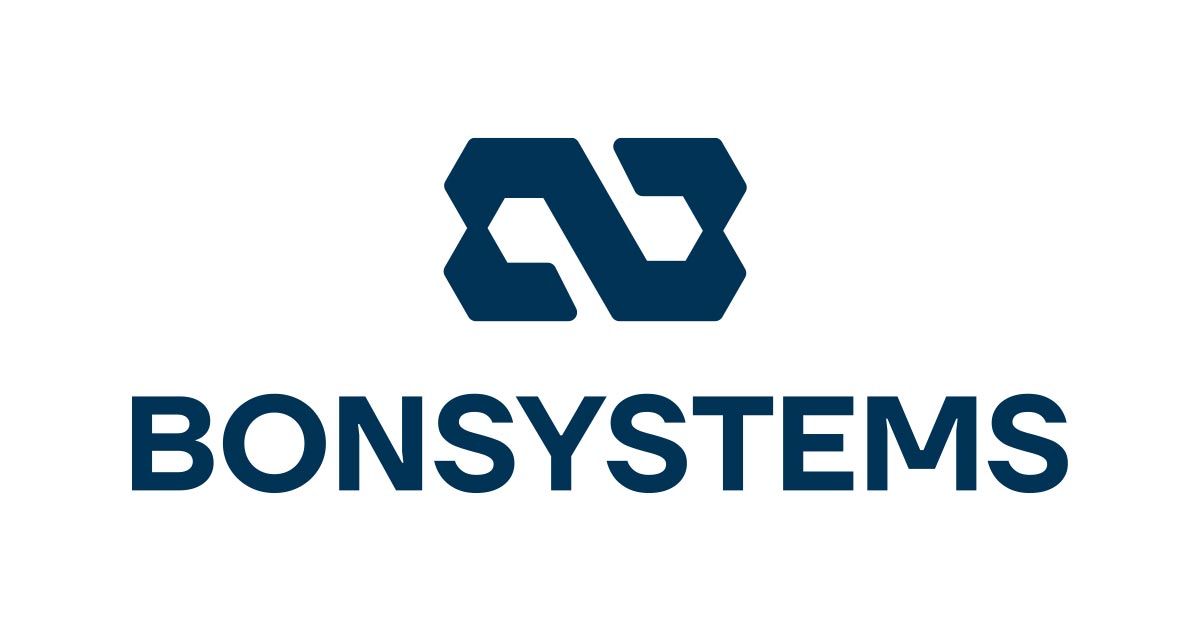Table of Contents
Today, let’s take a closer look at why a Hollow Shaft Reducer is often chosen for a Robot Joint Actuator. A Hollow Shaft Reducer refers to a structure where the output shaft is hollow, meaning the center is open. This allows internal routing of cables, such as wiring or sensor lines, through the shaft itself.
At first glance, it may seem like a simple structural detail. But anyone who has worked on robot design knows that this small feature can make a big difference. When designing a joint, maximizing the range of motion while keeping cables concealed becomes a key challenge. The efficiency of how the internal space is used can determine how clean and effective the overall structure becomes.
In real-world design scenarios, these challenges show up constantly. Even in what appears to be a simple joint, wiring, sensors, and motors must be packed tightly within a limited space. The placement and routing of each component can affect the entire design flow. This becomes even more critical when dealing with multi-joint robots or humanoids, where spatial constraints are much more pronounced.
However, simply having a hollow center in the output shaft can significantly change the design approach. Internal wiring no longer needs to be routed externally, which leads to a cleaner robot appearance and minimizes interference. A simpler structure also means easier assembly, better access between components, and smoother maintenance or module replacement.
This advantage becomes especially important in systems with many joints. In areas like robot arms or legs that undergo continuous movement, efficient use of internal space directly impacts overall performance. Just by using a Hollow Shaft Reducer, the structural completeness and usability of the entire system can improve significantly.

Real-World Applications of Hollow Shaft Reducers in Robot Joint Actuators
1) Shoulder and Arm Joints of Humanoid Robots
The joints in humanoid robots, especially in the shoulder and arms, are structurally complex and face significant design constraints. Like a human arm, these joints require multi-axis rotation, often with three or more rotational axes concentrated in a small space. Motors, reducers, control wiring, and sensor cables must all be integrated into this compact area. A Hollow Shaft Reducer allows cables to pass through the center of the input/output shaft, enabling internal routing. This helps maintain a slim external profile while simplifying both the mechanical design and assembly process.
2) Drive Units in Autonomous Robots
Autonomous robots such as AGVs (Automated Guided Vehicles) and AMRs (Autonomous Mobile Robots) rely on wheel drive actuators that deliver power directly to the wheels. These actuators are not just responsible for rotation, but also for supporting heavy loads, controlling speed, and enabling precise directional changes. When a Hollow Shaft Reducer is used in the drive system, the central passage allows cables or drive shafts to be routed internally. This makes it easier to manage limited installation space and supports cleaner, more compact system integration.
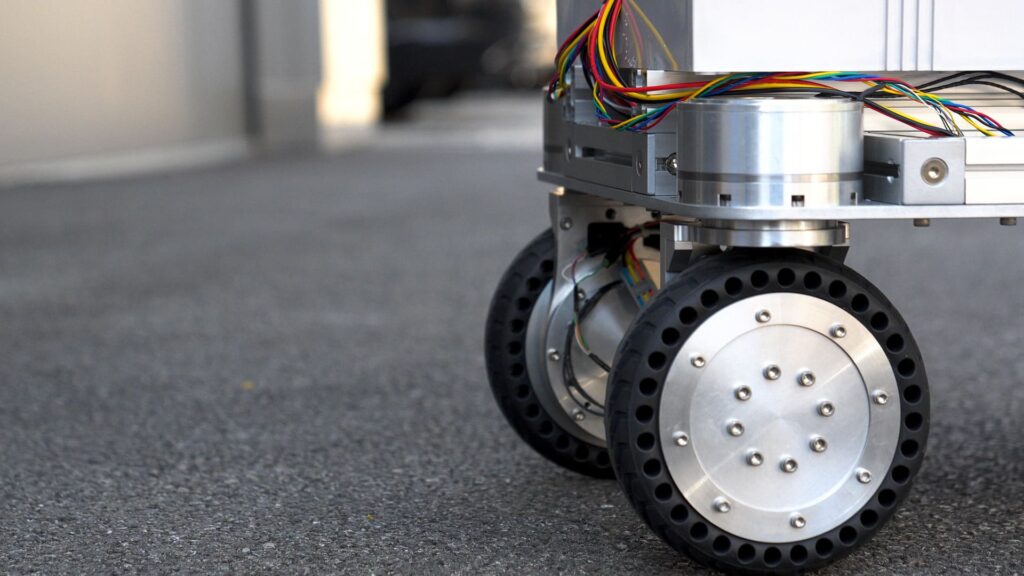
3) Joint Actuators in Quadruped Robots
The legs of a quadruped robot are more than just rotating mechanisms. They must support weight, absorb repeated impact from walking, and adapt quickly to uneven terrain. In this context, the weight, size, output torque, and reduction ratio of the actuators and reducers applied to the leg joints are critical factors that determine the overall performance of the robot.
When a Hollow Shaft Reducer is used in the leg joints, the hollow output shaft allows internal routing of cables or drive shafts. This simplifies the overall structure, reduces the need for external components or bulky housings, and results in a lighter actuator. The reduction in weight and rotational inertia helps improve torque efficiency, making the actuator more suitable for dynamic leg movements and increasing the robot’s payload capacity.
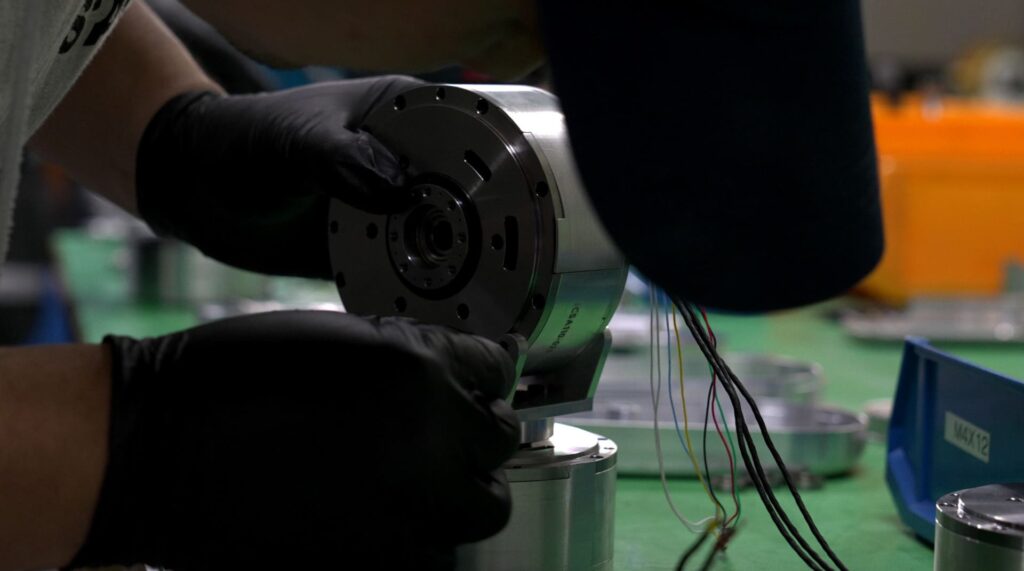
Recommended Product
A Hollow Shaft Reducer is a powerful design solution that helps make robot joint structures lighter, more compact, and more adaptable. But what product is best suited for real-world robot systems?
We recommend the BCSA V4, a Robot Joint Actuator that incorporates a Hollow Shaft Reducer at its core. It is a fully integrated module that combines a reducer, motor, encoder, and driver into a single compact unit, making both actuator installation and joint design much simpler and more efficient.
The BCSA V4 is available in two main types: a smart actuator type and a standard type. The smart version includes a built-in controller, which significantly simplifies wiring and system configuration. The standard type is designed for use with external controllers, offering greater flexibility for system integration depending on the application.
Notably, the new V4 series has been redesigned based on real-world user feedback, with several improvements over previous versions to better suit practical field use.
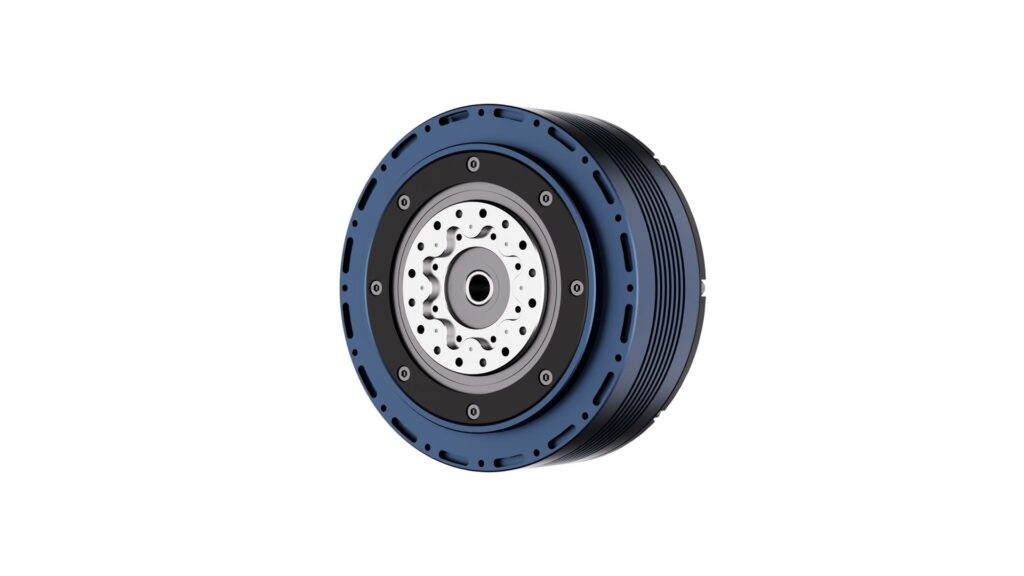
Key Features of BCSA V4
1) Thinner Profile for Compact Joint Design
The overall thickness of the reducer has been minimized to support slimmer joint designs. This allows greater flexibility in adapting to various mechanical layouts while reducing interference between components and improving clearance for joint rotation.
2) Optimized Reduction Ratios for Robot Joints
BCSA V4 offers a wider range of reduction ratios than previous versions, with finely tuned options such as 11:1, 15:1, 19:1, and up to 49:1. This enables designers to match speed and torque characteristics to the specific role of each joint, resulting in more efficient and high-performance motion control.
3) Improved Thermal Management for Long-Term Stability
A redesigned internal housing with optimized heat flow paths allows for efficient dissipation of heat during continuous operation. This prevents performance degradation over time and contributes to the overall stability and reliability of the system.
4) Lightweight Design for Better Torque Efficiency
By reducing the overall weight without compromising torque output, BCSA V4 achieves a high-efficiency drive configuration. This is particularly advantageous for applications where payload capacity is critical, such as legged robots and collaborative arms.
5) Modular Design with Separable Motor and Reducer
The reducer and motor are designed as separable modules, allowing for easy maintenance and part replacement. If either component requires service, only that part can be exchanged, reducing downtime and simplifying field support.
BCSA V4 is a modular Robot Joint Actuator suitable for a wide range of applications, including humanoid robots, collaborative robots, quadruped systems, and autonomous mobile platforms. It combines the structural advantages of a Hollow Shaft Reducer with practical usability and maintenance efficiency, making it a reliable and flexible solution for next-generation robotic systems.
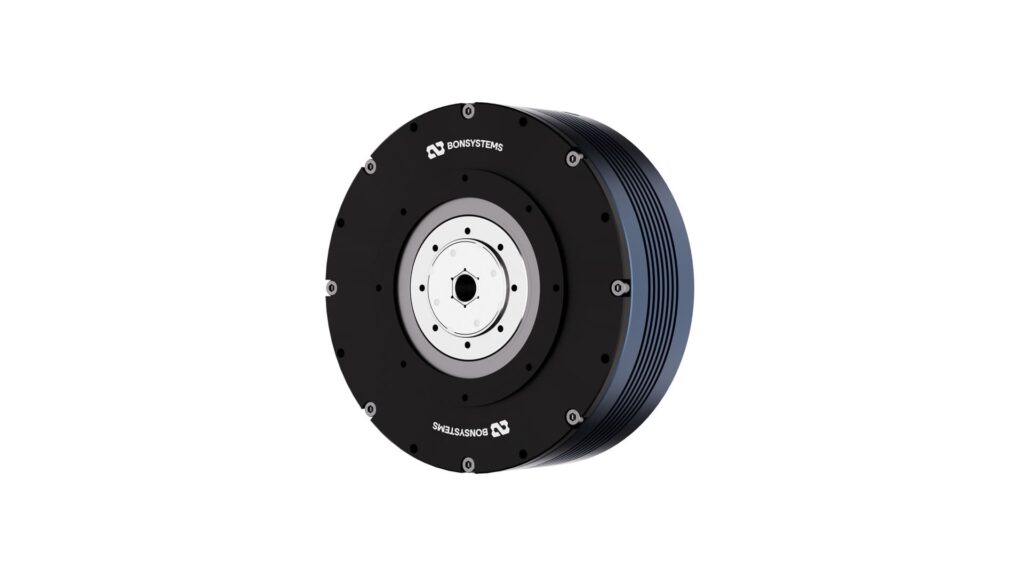
Striving for Excellence, Not Perfection.
When designing for efficient motion in complex mechanical structures, a system built around a Hollow Shaft Reducer is no longer just an option. In today’s robotics environment, where design flexibility, torque efficiency, space optimization, and ease of maintenance all need to be achieved together, the answer lies in the Robot Joint Actuator.
BCSA V4 offers a compact structure, high output torque, and flexible integration to meet these exact needs. It is a small yet meaningful solution that can create a real difference in your current development challenges.
If you need guidance on product specifications or would like to explore how it can fit into your system, feel free to contact Bonsystems. From design consultation to mass production, we work closely with you as a committed technical partner. We are here to provide practical and reliable answers every step of the way. Thank you.
Frequently Asked Questions (FAQ)
Q. What is a Hollow Shaft Reducer?
A Hollow Shaft Reducer is a type of reducer with an open center in its output shaft. It is designed to allow components such as cables, sensor lines, fluid tubes, or drive shafts to pass through the center. This structure enables more efficient use of internal space in complex robot designs, keeping wiring internal and improving both design flexibility and system stability.
Q. Why use a Hollow Shaft Reducer in a Robot Joint Actuator?
Robot joints are often limited in available space, require repetitive motion, and must accommodate complex internal routing for wiring and sensors. A Hollow Shaft Reducer allows cables to be routed through the center of the joint, resulting in a slimmer structure with fewer interferences. For multi-joint robots and humanoid systems, where joints are densely packed, the use of a Hollow Shaft Reducer becomes essential. It improves design efficiency, supports stable repeated operation, and enhances the overall system’s appearance and integrity.
Q. What kind of company is Bonsystems?
Bonsystems is a robotics technology company specializing in Cycloidal-based reducers, smart actuators, and robot manufacturing services. We develop integrated drive modules that combine reducers, motors, and control systems, and offer custom design and scalable production for applications including humanoid robots, autonomous platforms, quadruped robots, and industrial automation. Our strength lies in practical engineering support and flexible customization.
Q. Which product is recommended for humanoid robots?
For humanoid robots that require many joints and have strict space constraints, we recommend the BCSA V4 Robot Joint Actuator, which incorporates a Hollow Shaft Reducer. With a compact and lightweight design, support for multiple reduction ratios (from 11:1 to 49:1), thermal management features, and a separable motor-reducer configuration, it is well-suited for the dynamic and complex demands of humanoid systems.
Q. In which fields are Hollow Shaft Reducers or actuators commonly used?
Hollow Shaft Reducers and actuators are ideal for structures where internal wiring and sensors must be tightly integrated, such as the shoulder, arm, and leg joints of humanoid robots. They allow for clean internal routing within limited joint space, resulting in simpler designs and slimmer external profiles. The benefits of this structure become especially clear in systems that require precise motion and reliable repetitive operation.
